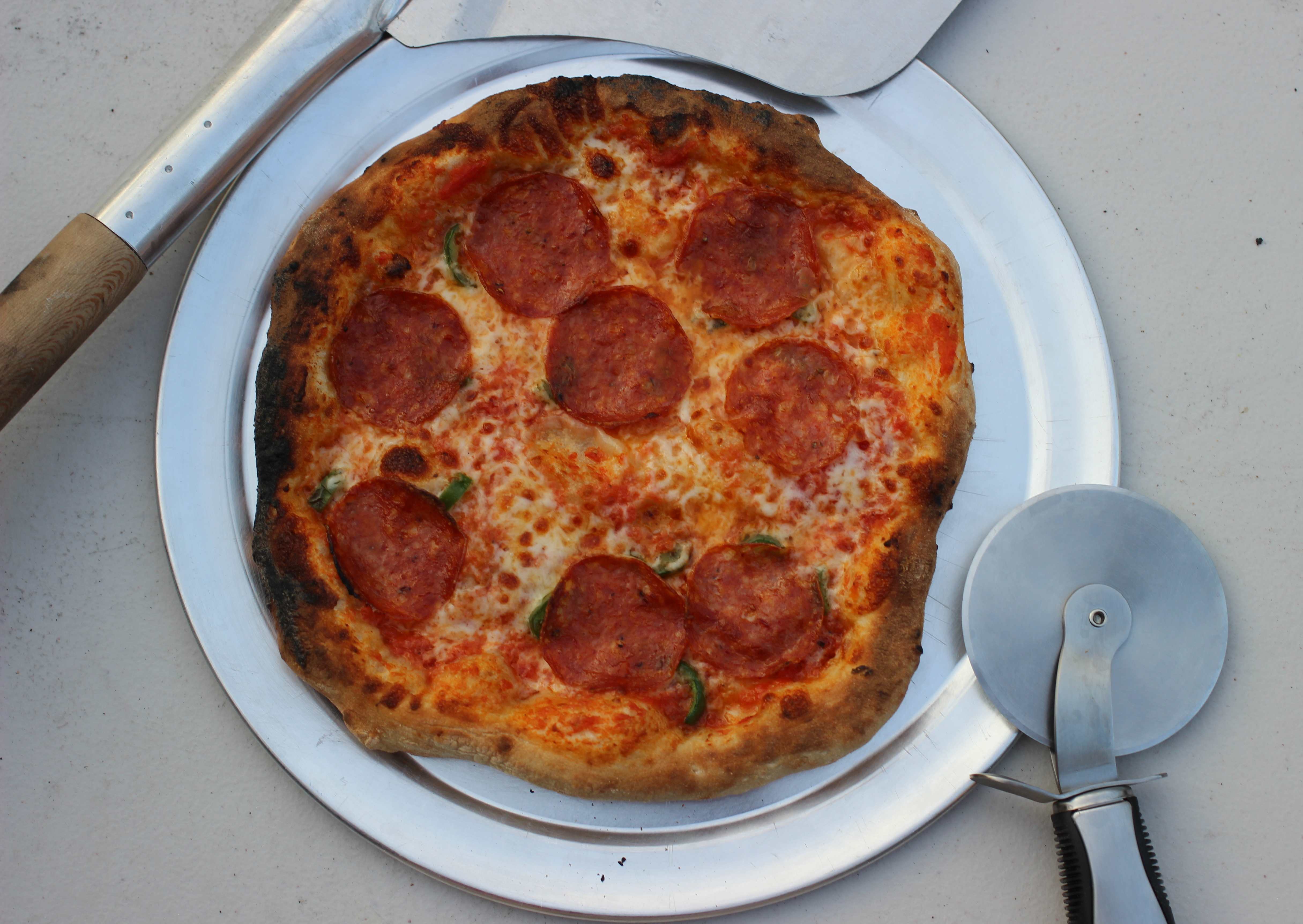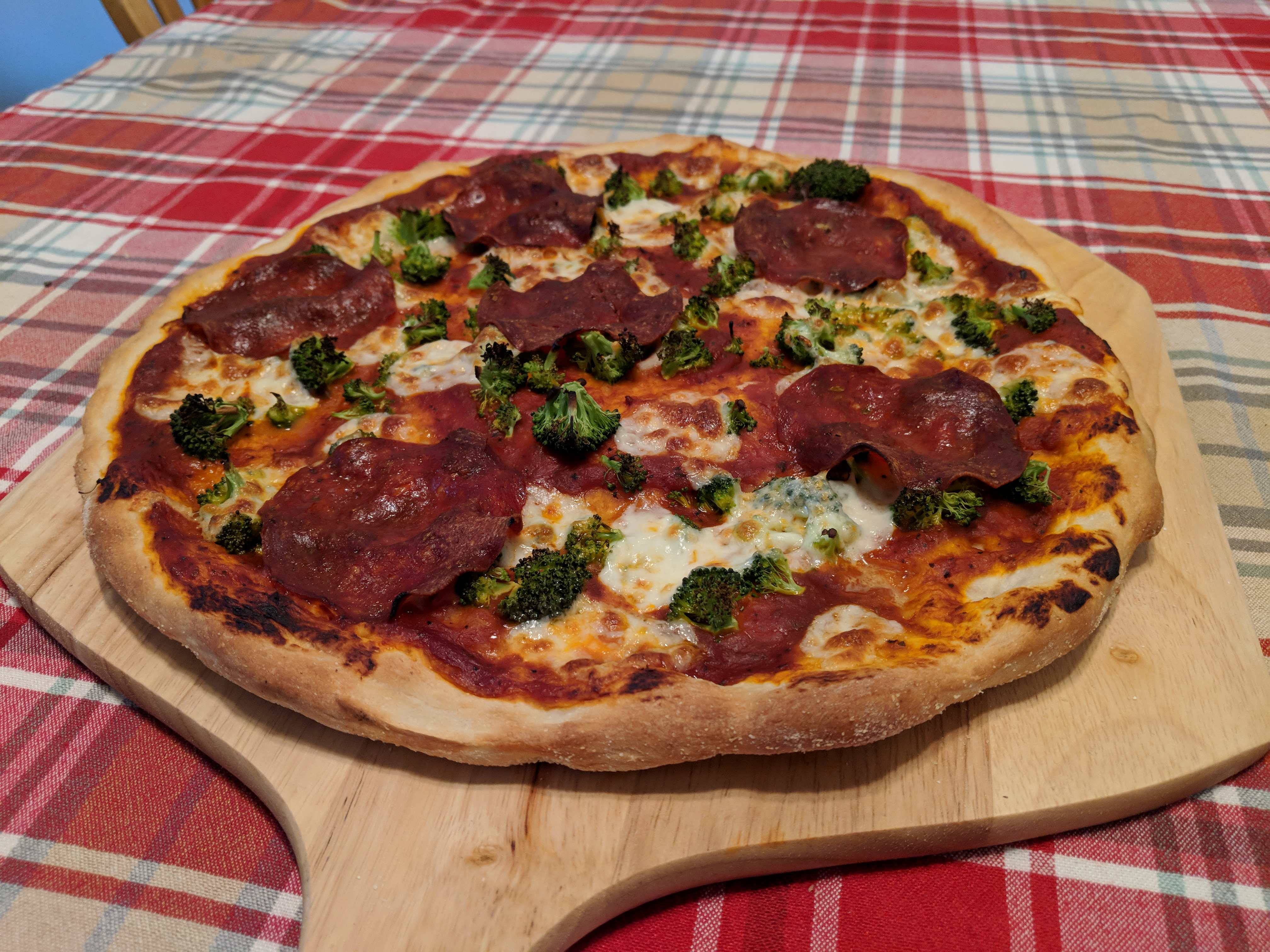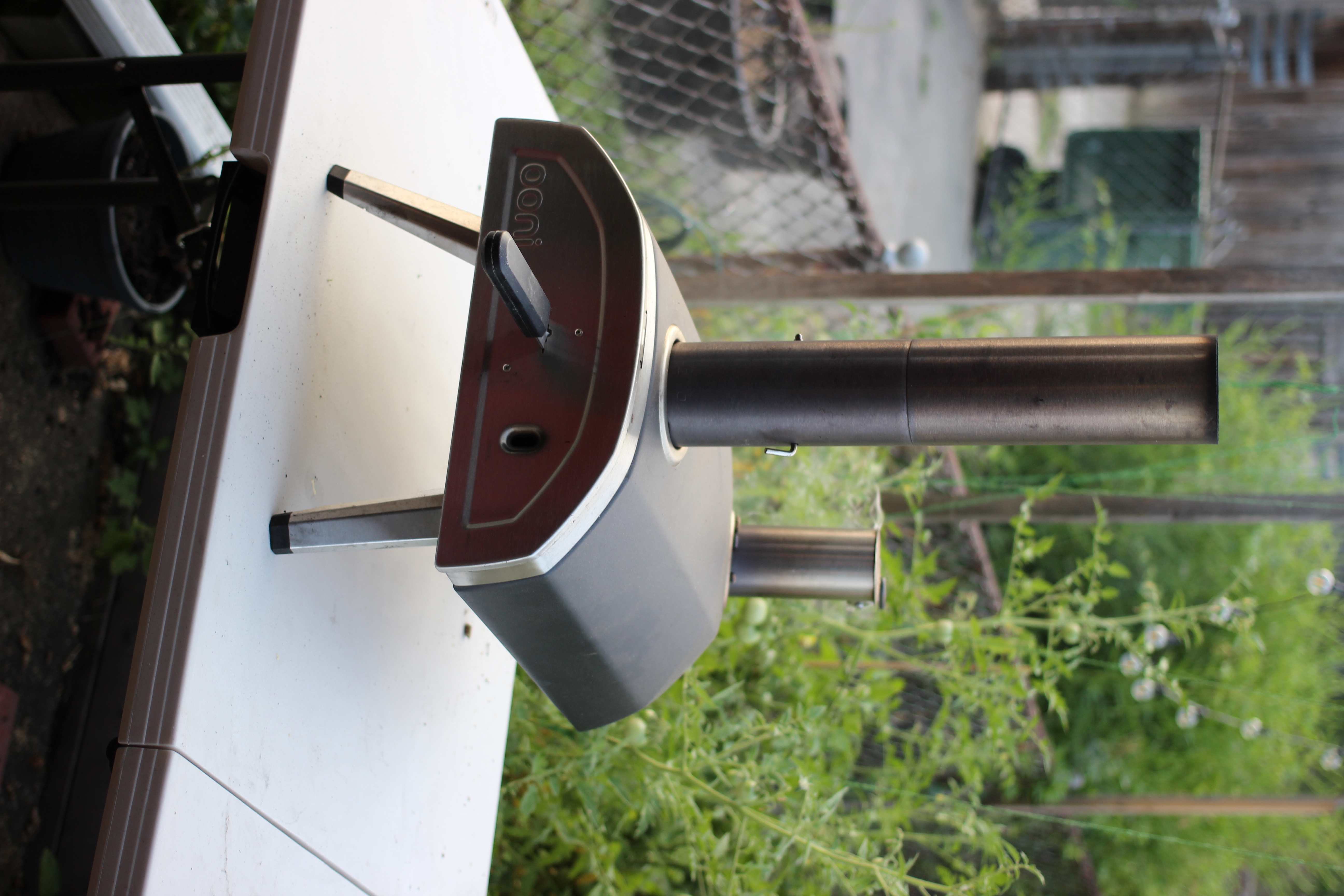Pizza: An introduction

If you’re just interested in the recipes, here are some quick links before I launch into my journey with pizza.
No pizza for old men
I think the first time I made “pizza” from scratch was in the kitchen of the dorm building I lived in my first two years at Rutgers. The kitchen had a fridge, oven, range, sink, cabinets, and counter tops but that was about it. To use it, we had to travel down to the first floor and bring all of our own supplies and tools.
I can’t remember what we cooked the “pizza” on but the “dough” was a mixture of mainly water and pancake mix, very sticky, and put directly into the oven for a pre-bake before toppings (did we even top it?). It was terrible and my roommates were overly generous with their feedback but it was late at night, we only had the dinning hall food to compare to, and we had fun.
I had at other points tried to make actual pizza as God intended but I always bought the dough from a local pizza shop, messaged it out into a disk, topped it, and stuck it in the oven. I don’t think it ever came out well because I remember I switched to making calzones which cooked much better on a baking sheet.
You’d think by this point I’d have given up. Pizza is hard. It’s usually pretty cheap. Just buy it and leave it to the experts. That was my thinking for a while but in my senior year, I got a pizza stone and started trying to make my own dough. The results were fine but never like what you’d get from a shop. It didn’t help that I was adding cinnamon to the sauce (what was I thinking?) and that the stone eventually broke.
Things didn’t start getting serious though until I moved to Baltimore, Maryland. Being from northern New Jersey, I had access to some of the best takeout pizza in the United States due to the proximity to New York City. In Baltimore, it sudddenly became very difficult to find cheap, takeout pizza that was any good. Sure, there are some artisinal places that add hot honey and vegan sausage, brie cheese and blueberries, and the standard overpriced “fresh mozzarella and basil.” But those places start at $16 for a personal pie and I was a new graduate student with no savings and a regular craving for a $12 large cheese pie.
There are places that offer that - but they are not good and I would not allow myself to be tricked into thinking they are. Baltimoreans should take no offense though. I similarly wouldn’t go to New Jersey’s attempt at LP Steamers. It’s just going to be subpar when compared to the real thing unless someone starts forking over some money. At that point I realized, if you want something done right, you’ve gotta do it yourself.
There will be pizza
The first issue to solve was the baking surface. I considered a new stone but I hate how fragile they are. A baking steel sounded like a great option but they’re expensive. I finally opted for a Lodge cast iron pizza pan - has handles, holds heat well, can be used in other scenarios, and it’s nearly indestructable.
The second issue was the dough. There were no shops that I trusted to sell me good dough and the supermarket sold dough but it was frozen so there’d have to be planning to buy it ahead of time and let it defrost. The former worked out well many times but what I really wanted was a better recipe than what I had and that could be ready in just an hour or two. That search led me to Bobby Flay’s dough recipe. Is this the greatest recipe? No. But the search had to start somewhere and this was the first dough that gave consistent results, had a quick rest time, and it’s actually the base for the recipe I use today (though with a 24 hour rest in the fridge).
With these two solved, the sauce, cheese, and toppings were carried over from my previous experience. For the sauce, I started with a can of crushed tomatoes and additions that changed over time while I experimented. For the cheese, I either bought pre-shredded, low fat, low moisture mozz or the fresh stuff in the fancy cheese section. The toppings were a mixture of fresh veggies and Hormel pepperoni.
The interesting part to this stage of my pizza journey was the bake. I had a very basic oven which was either “on” or “off”. No top-down burners. No convenction. “Broil” just meant that the oven never turned off. This meant a maximum oven temp of 550-600 F which is actually pretty hot. The bake had two steps. The first was just the dough in the oven on the cast iron for a 1-2 minute pre-bake to allow the crust on the bottom to start browning before the water in the sauce inevtiably acted as a heat sink. After the pre-bake, the whole pan would come out of the oven (this eventually destroyed my oven mits), the pizza was topped, and the whole thing returned to the oven for about 10 minutes.
While there’s certainly been some fine tuning since then, I’m proud of the pizzas that came out of this method. The crust on bottom and at the ends was crisp. The end crust was airy. Everything finished cooking at the right time. Definitely not the best tasting or prettiest pizzas I’ve ever made but Baltimore takeout had been beaten.

Into the pizza
The above was my methodology for quite a while until I started paying more attention to pizza related content online. Youtube videos on classic NY pizza shops/chefs. Posts on food subreddits. The big one was the Bon Appetit Making Perfect: Pizza series.
There were certaint parts of that series that were over-the-top - making your own mozzarella, buying very expensive San Marzano tomatoes, etc. However, they made some really good points that got at the heart of what makes a good pizza. Don’t cook your tomatoes ahead of time to keep the sauce acidic. Use plenty of salt in your dough and sauce. Track how much water you’re incorporating and account for how that impacts cooking in the oven (they used a 750 F oven so I could have more water because cooking times were longer at lower temp). The Bobby Flay recipe started to change as I incorporated many of the ideas I started to pick up on.
The pizza ultimatum
Then came Kenji’s New York style pizza (recipe) and the accompanying video. That’s when I went - “Wait… what is that?”
The Ooni Koda 16 - an outdoor gas powered pizza oven that could fit on a table top, had oven temperatures in excess of 700 F, and cooked beautiful pizzas. To that point, I thought you needed an outdoor brick oven, a $1000 Brevil (used in the Bon Appetit series), or an industrial pizza shop tiered oven. This was an option?
I saw it in Kenji’s video at the beginning of the pandemic and I immediately started contemplating if I could buy one. The $500 price tag seemed pretty steep but for $300 there was a smaller one that took wood pellets. I started researching reviews, looking at pictures, and trying to figure out if it was a good idea (again, a grad student stipend requires some planning).
The tipping point was when I got burned (literally) by my favorite local artisan pizza place three straight times during pandemic takeout. Each time, the pizzas had pure black crusts that were beyond edible and I felt too guilty to complain when I knew restaurants were already struggling. Three times though wasn’t a fluke. Someone saw these pizzas before they made it into the box and deemed them edible. But by that point, I had paid $120 for six black pies and, again, grad student stipend doesn’t support food waste. So I had three options. Either I was going to go without pizza or I would keep expecting the quality standards to change at the restaurant or I would justify the pandemic purchase of an Ooni and become my own pizza place. No surprise, it was one of the best purchases I’ve ever made.

Every couple weeks, I make 3-4 nights worth of doughs and have hot-out-of-the-oven pizza for dinner that beats the snot out of the fast food places and competes with the artisan ones - and it’s way cheaper. I estimate I’ve made about 150 pizzas in it so far and at $16 per pie, that’s $2400 which more than pays for the oven. My only regret is that I should’ve spent the money and got the Koda 16. It’s bigger size would allow for larger pies and the wood pellets leave soot and make it hard to regulate the temperate.
With the story now told, let’s get to the recipes!
P.S. What ties the section titles together? Pizza variations of 2008 Oscar Nominated films. Why 2008? I don’t know, man. Just let me have fun.
